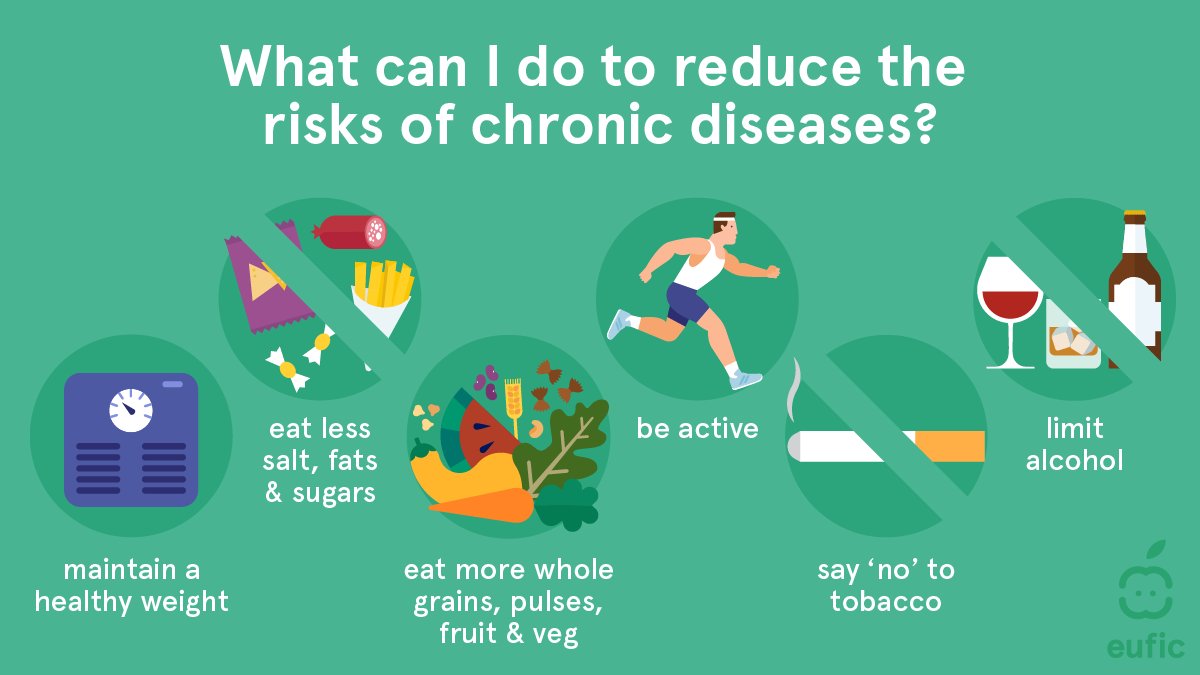Preventing Chronic Illnesses: Encouraging Health and Well-being and Well-being
Introduction
Nonetheless, several chronic diseases like cancer, diabetes, respiratory and heart disease are some of the major causes of morbidity as well as mortality worldwide. In most cases such diseases do not arise abruptly but take a long time to develop influenced by multifaceted genetic makeup together with environmental exposures amid behavioral patterns. Notwithstanding this fact; prevention is still possible for many cases if people adopt healthy lifestyle practices hence reducing their chances of falling sick with these ailments. This essay will discuss about why we need to prevent chronic illnesses from happening in the first place and also highlight some common risk factors associated with them while giving out proven ways through which individuals can promote their overall health and well-being for life.
Understanding Chronic Illnesses: A Problem Growing Across The World
Non-communicable diseases (NCDs) or chronic illnesses refer to prolonged medical conditions requiring consistent management over time. These diseases are responsible for most deaths globally because they account for over sixty percent of all death cases worldwide.
Some examples include:
- Cardiovascular Diseases – For instance stroke among others
- Type 2 Diabetes Mellitus
- Cancers
- Chronic Respiratory Tract Infections like asthma bronchitis emphysema etcetera
- Mental health disorders (e.g., depression, anxiety)
Even if some diseases are influenced by genetic makeup, most of them are determined by changeable risk factors. These risks can be as a result of unhealthy lifestyle choices, surroundings and economic conditions.
The Significance Of Prevention: From Treatment To Wellness
Preventing chronic ailments is fundamental to well-being, lowering healthcare expenses and enhancing the quality of life. While medical treatments and interventions are crucial in the management of chronic illnesses, prevention provides a more proactive approach that deals with underlying causes and promotes long-term health.
Prevention involves:
- Identification Of Risk Factors: Recognizing what might cause or lead to chronic diseases is the initial stage towards preventing them from occurring. Some common risks include poor dieting habits, physical inactivity, smoking tobacco products or cigarettes excessively consuming alcohol beyond recommended levels being obese having high blood pressure having high cholesterol levels inhaling harmful substances found within our environment.
- Encouraging Healthy Habits: It is important to persuade people into adopting good behaviors like eating balanced meals always exercising frequently refraining from smoking or drinking too much liquor managing anxiety through relaxation techniques going for medical checkups regularly because doing so can greatly minimize chances of contracting such illnesses in future.
- Generating Helpful Environments: Having supportive environments that advocate for healthy choices and behaviors remains the most important aspect of prevention. These involve putting in place policies and rules that enhance healthy eating, physical activity, and tobacco control besides increasing access to healthcare services together with preventive screenings.
- Giving Power to Individuals: The main idea behind prevention is empowering people to take charge of their own health. This can only be achieved by availing information as well as resources necessary for making informed decisions about healthy living which might involve such things like adopting new lifestyle habits or even chronic disease management among others.
Key Risk Factors for Chronic Illnesses
Although there are many different risk factors associated with long-term diseases, some common ones include:
- Unhealthy Diet: Various unhealthy eating patterns contribute towards obesity hypertension high cholesterol levels among other chronic ailments’ risk factors including but not limited to; over consumption of processed foods containing sugars fats salts etcetera lack of enough fruits vegetables whole grains lean proteins within the diet.
- Lack of Exercise: Obesity, heart disease, diabetes and other chronic ailments can be caused by a sedentary life style that lacks physical engagement or involves extended periods of sitting. Contrarily, routine physical activities enhance the health of the heart, build muscle and bone strength, and lower the chances of becoming chronically ill.
- Tobacco Smoking: The greatest risk factor for chronic diseases such as heart disease, cancer respiratory diseases like tuberculosis among others is smoking cigarettes. If one stops smoking or avoids being around those who do smoke; then they greatly reduce their chances of developing these conditions.
- Too Much Drinking: Drinking alcohol excessively can lead to liver problems including cirrhosis which is a very serious condition that could cause death if not treated early enough; cancer especially liver cancer also known as hepatocellular carcinoma (HCC) among others; cardiovascular diseases such as hypertension (high blood pressure); mental illnesses like depression among others too may arise due to this habit . It would therefore be prudent to limit oneself only drinking moderately or not at all since it helps prevent such conditions from occurring.
- Overweightness: There are many diseases linked with being overweight some are coronary heart disease, type two diabetes mellitus certain types cancers musculoskeletal disorders. Balanced diets supported by regular exercises should thus be encouraged so as people can avoid suffering from these obesity-related complications.
- High Blood Pressure and High Cholesterol: Hypertension (high blood pressure) and hyperlipidemia (high cholesterol) are among the major causes of coronary heart disease, stroke and other cardiovascular diseases. They can be prevented through management of BP and cholesterol levels via lifestyle changes as well as drugs where necessary.
- Environmental Exposures: Environmental pollution such as air pollution; chemical contaminants like lead or mercury in water bodies; occupational hazards among others may contribute to chronic diseases’ development too. People should therefore minimize their contacts with harmful agents found in the environment which can significantly reduce risks for respiratory illnesses including cancers.
Strategies for Preventing Chronic Illnesses
Preventing chronic diseases requires an all-inclusive approach that takes into account individual behaviors, community commitments and public health efforts at large. Here are some ways backed by evidence on how this can be achieved:
- Healthy Eating: Following a balanced diet rich in fruits; vegetables; whole grains; lean meats plus fish containing omega three fatty acids while avoiding processed foodstuffs would help prevent chronic diseases besides promoting general wellbeing. Similarly, it is important to limit intake of sugary snacks, drinks with high levels calories so as not only stay within healthy weight ranges but also minimize chances getting conditions associated with obesity.
- Keeping Fit: Undertaking regular physical activity (such as jogging, cycling, swimming or aerobics) can prevent chronic diseases through enhancing the health of the heart and blood vessels, helping one maintain a healthy weight and relieving stress. Have at least 150 minutes of moderate-intensity exercise or 75 minutes of vigorous-intensity exercise per week plus muscle-strengthening activities on two days or more weekly.
- Anti-Tobacco Campaigns: When it comes to chronic illnesses prevention, especially cardiovascular diseases, cancer and respiratory ailments; cessation smoking should be made mandatory while ensuring that there is no exposure to second-hand smoke. People may quit smoking with the help of programs for smoking cessation, nicotine replacement therapies (NRTs) as well as joining support groups where they can get encouragement from others who are trying to quit too.
- Average Alcohol Drinking: Moderate consumption levels should not exceed one drink each day for women and two drinks each day for men because this could protect people against getting liver disease due to alcoholism; some cancers may also be prevented among other chronic conditions caused by excessive drinking like cardiovascular disorders. In addition people need to avoid drinking heavily within short periods of time and seek assistance if they find themselves misusing alcohol in order stay healthy both physically and mentally.
- Stress Reduction: The immune system, heart health, and mental wellness are among the many chronic diseases which can be brought about by chronic stress. Techniques used in the management of stress such as yoga, mindfulness meditation deep breathing exercise and progressive muscles relaxation are some methods that can be used to cut down on tension levels while enhancing hardiness.
- Regular Health Check-ups: Frequent healthcare screenings help in early detection of long-term illnesses thus preventing their severity or complications. Screening for high blood pressure, high cholesterol levels, diabetes mellitus and some cancers is done through tests so that risk factors may be identified early enough for intervention/treatment to take place.
- Health Education and Propagation: Teaching people about healthy living may lighten up their lives, and therefore, they will make right decisions on what to do with their lives. Prevention could be done through campaigns about health promotion; these can also be taken into communities or even worked on at places of work such as wellness initiatives thus creating awareness on the importance of prevention while motivating people towards safeguarding their own health.
-
Healthy Lifestyle Background
Conclusion: A Future that is Better through Prevention
To conclude with this paragraph – preventing chronic diseases must become one of the main concerns for governments because it calls for collective efforts and investments in preventive strategies. In addition to addressing changeable risk factors which have a bearing on health outcomes; there need be support systems around behavioral changes so that they are sustainable thereby reducing long term illnesses among populations.
Prevention not only saves money but also gives back power by providing necessary skills and insight into personal well-being management. It means that an individual can take charge over his/her destiny concerning healthy living hence enjoying many years free from ailments related to unhealthy lifestyles.
As we tackle the trials of contemporary life, let us strive towards prevention and commit to spending on our own and our offspring’s health and wellness. We can work together to establish a healthier, more robust community of people in which preventable chronic disease is kept at bay and everyone is provided the means to flourish.





















